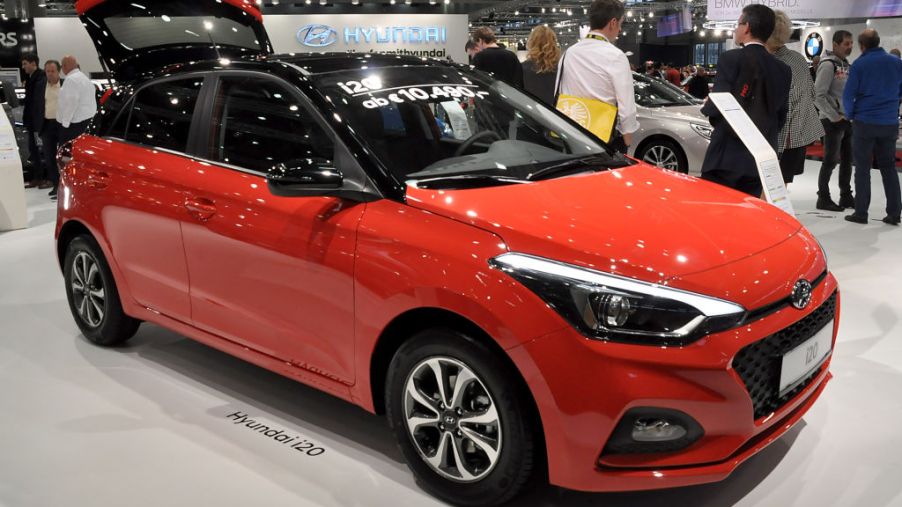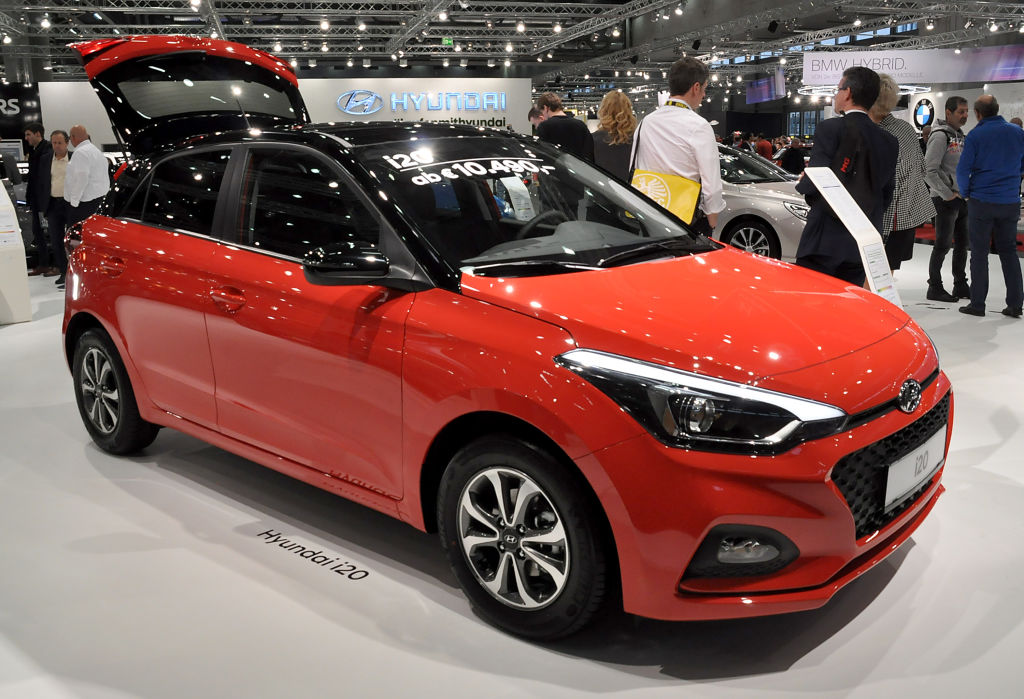
The Hyundai i20 Proves That Smaller Vehicles Are Still Valuable, but Americans Can’t Buy It
A subcompact car that offers great value is the Hyundai i20. It’s reliable, affordable, and easy to drive and park. It features up-to-date infotainment and safety tech, and a redesign for 2021 sharpens the styling of this five-door hatchback.
But if you haven’t heard of the i20 it might be because it’s available overseas but not in the U.S. We’ll go over a few details about this Hyundai and talk about comparable cars that are available stateside, with some help from MotorTrend.
A closer look at the Hyundai i20
The Hyundai i20 was rolled out in 2008. The latest refresh has given it fiercer styling with a wide grille and angular LED headlights and taillights that give a nod to the current Ford Fiesta. At 101 inches, its wheelbase is slightly larger than the Fiesta’s.
This subcompact has four engine options, but an available 1.0-liter three-cylinder diesel turbocharged engine with a 48-volt mild-hybrid powertrain is the one that captured our interest. It’s matched with either a seven-speed dual-clutch transmission or a new six-speed “smart” manual transmission that disengages when the throttle is lifted.
The sophistication of the Hyundai i20 extends to the technology inside with a 10.25-inch digital gauge cluster sitting next to an equally impressive 10.25-inch infotainment touchscreen. Connectivity features include wireless charging, Apple CarPlay and Android Auto integration, and Hyundai’s own connectivity suite. An eight-speaker Bose sound system comes standard.
Available advanced safety features on the i20 are comparable to those on better-equipped American vehicles. Buyers can opt for navigation-based cruise control, lane-keep assist, lane-departure warning, blind-spot monitoring, rear cross-traffic alert, and forward-collision warning with pedestrian detection.
Why can’t we get the i20 in the U.S.? What can we get that’s similar?

Hyundai designed the i20 with the European and Asian markets in mind, where many drivers want an economical small car that can easily maneuver narrow city streets. Americans who don’t want an SUV or a pickup truck might appreciate the i20 for these reasons too.
But its shared platform with the Hyundai Accent might be why the i20 isn’t being sold in the states, and until 2018, the Accent was available in a hatchback body type, making it even more similar to the i20. The hatchback was discontinued because it competed directly with Hyundai’s popular Kona SUV.
So the Accent sedan is probably the i20’s closest facsimile and starts at $15,295. It has a 1.6-liter engine that makes 120 hp and has a standard six-speed manual transmission. But it doesn’t offer an engine option with a mild-hybrid powertrain – we hope that Hyundai brings one to the states soon, though.
The Accent’s infotainment display is considerably smaller than the i20’s, but smartphone compatibility is available on upper trims. Forward-collision warning and automatic emergency braking are options on the Accent, setting it apart from other subcompacts on the market.
Another alternative is the Kia Rio, which is the Accent’s corporate twin and is available in a hatchback body type. But at $15,850, it’s more expensive with only a CVT drivetrain and fewer tech options than the Accent. Between the two, the Accent offers more for your money if you’re looking for something close to an i20.
The i20 isn’t the only foreign vehicle kept out of the U.S.
The i20 is out of reach for American buyers, but it’s only one of many cars that have never made it to our shores for a variety of reasons.
Sometimes, automakers decide that the market for a specific model isn’t big enough. Like the i20, the Audi A1 is a subcompact with an array of engine and drivetrain options that would excite American buyers. But Audi has rightsized the slightly larger A3 for the U.S. market instead.
Other vehicles, such as the upscale TVR performance cars, are banned outright from the U.S. because they are too fast and unsafe. The National Highway Traffic Safety Administration is unyielding in allowing these cars to be sold here in the states, so fans will have to travel overseas to experience them.
There are still other cars that are just too opulent for Americans, like the Toyota Century. Favorably compared to Rolls-Royce, the latest generation of the Century is sold exclusively to corporate types and royalty in Japan. The Century’s cachet will be out of reach for the rest of us.
So, even though the Hyundai i20 would appeal to Americans shopping for an economical, fun subcompact car, we might be waiting a while to see it in Hyundai dealerships here. In the meantime, the Accent sedan will have to do.


